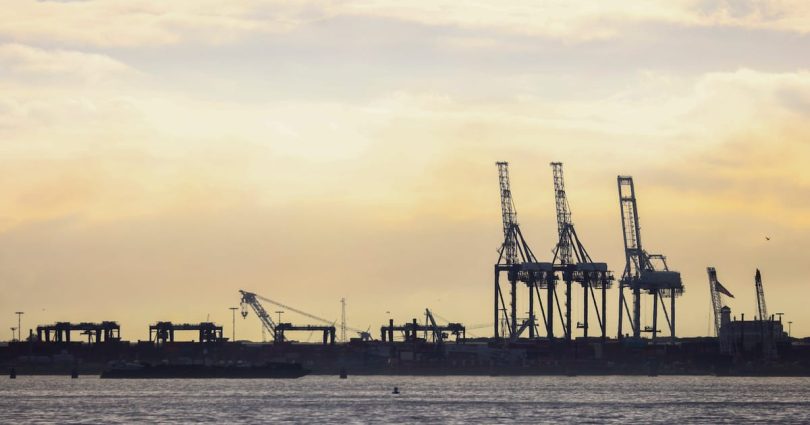[ad_1]
Such initiatives reflect a larger effort within the sector to solve the perpetual “chicken-and-egg” problem that is stumping shipping’s clean energy transition, Browne said.
“Ports say, ‘We don’t want to develop zero-emission infrastructure because the ships aren’t ready,’” she said. “And then shipowners say, ‘Well, we don’t want to build zero-emission ships, because there’s nowhere to get zero-emission fuels.’”
Report cards compare how ports are performing on climate progress
To jump-start action on the land side, Ports for People recently developed a nine-point playbook that outlines actions maritime hubs can take — such as offering financial incentives for cleaner ships that enter ports; replacing diesel-guzzling harbor craft with less polluting models; and purchasing more renewable electricity to power ships idling at berth and recharge battery-powered vessels and equipment.
With such criteria in mind, the environmental campaign followed up with the report-card series to assess the progress, or lack thereof, at 15 of the world’s top container ports. The group eventually plans to review all 50 ports included on the World Shipping Council’s list of busiest container ports.
“We wanted to take a snapshot of where some of the biggest ports are today on this transition,” Browne explained. Rather than assign letter grades, the group put ports into one of three categories.
Ports in the “jumpstart” group, the bottom category, are those that should immediately start planning and adopting zero-emission strategies. This includes Tanger Med, Morocco, which is the top port in Africa and a fast-growing hub, thanks to its proximity to Europe, but which lacks any formal climate target.

Ports in the “accelerate” bucket, the middle category, should expand and hasten their existing plans. Take Busan, on the southeastern coast of South Korea. The city’s port has a commitment to be carbon neutral by 2050, has adopted electric cargo-loading cranes, and plans to unveil its first electric passenger ferry next year. Ports for People recommends that Busan also adopt a zero-emission shipping target for 2040 and fund efforts to produce greener fuels and build cleaner ships.
The ports in the top “full speed ahead” category already have decarbonization plans in place, but may need to prioritize and focus on certain aspects.
Ports in Los Angeles, Long Beach, Singapore and Vancouver fall into this higher grouping. They earned high marks for building shoreside charging infrastructure, electrifying port equipment and working to launch zero-emission ships by 2030. But all four were urged to abandon their support for using liquified natural gas as a marine fuel. Although LNG produces fewer air pollutants than today’s heavy fuel oil when burned in ships, it’s still a major source of methane, a potent greenhouse gas.
Advocates say policy is a missing piece in cleaning up ports
To help maritime hubs fulfill many of Ports for People’s suggestions, regulators and government agencies will need to set stronger policies and provide more incentives to make the shift, Browne said.
In the United States, for instance, the Inflation Reduction Act includes $3 billion to reduce air pollution and advance zero-emissions technology at ports. That’s on top of the $17 billion provided in the 2021 infrastructure law for upgrading ports and crucial waterways. But completely revamping ports’ fuel supplies and facilities and replacing dirty equipment at coastal and lakeside ports will likely cost billions more.
The same is true for efforts to scale green hydrogen, which so far are largely driven by company promises and not industry-wide rules compelling a shift to cleaner fuels, said O’Leary of Opportunity Green.
“Investors and shipping companies are saying to regulators, ‘Look, we are actually ready to move. But we need that [policy] signal,’” she said. “Otherwise, it’s really quite a risky prospect for a shipping company, or even a hydrogen producer, to rely on shipping demand [scaling up] without the regulation.”
While the climate conference in Egypt brought shipping emissions into focus, the real work of setting maritime policies will happen later in London. The International Maritime Organization, a U.N. body, is slated to hold environmental meetings in December and next summer to negotiate a net-zero emissions target for 2050.
O’Leary said that, given the recent momentum, she feels optimistic that negotiators might finally set meaningful rules to limit shipping emissions and boost investment in cleaner fuels. Whether that’ll be enough to decarbonize shipping in just a few decades remains to be seen.
[ad_2]
Source link








